Learn how to plant, grow, and care for the unique, night-blooming Queen of the Night flower (Epiphyllum oxypetalum) with this detailed guide covering ideal conditions, blooming, and more.
How to Plant, Grow, and Care for Queen of the Night Flower

If you’re looking for a true conversation piece in the garden, the Queen of the Night flower (Epiphyllum oxypetalum) is hard to beat. This unusual flowering succulent puts on one of the most dramatic bloom displays in the entire plant world. But you’ll have to stay up late to see it!
As its name suggests, the Queen of the Night flowers only open up at night, releasing an intense, sweet fragrance to attract moth and bat pollinators. The large, showy white blossoms emerge for just a single night before collapsing by morning. It’s an unforgettable sight to see these striking flowers in bloom.
Native to Mexico and rainforests of Central America, Queen of the Night is an epiphytic cactus, meaning it grows in trees and on other plants in its natural habitat. In cultivation, it makes a versatile potted plant or hanging basket that’s relatively easy to grow if you follow a few basic rules.
This guide covers everything you need to know about growing this remarkable night bloomer, including ideal conditions, proper planting, seasonal care, encouraging blooms, and more. Just be prepared to rearrange your sleep schedule to catch the Queen’s stunning but brief flowerings!
What is Queen of the Night?
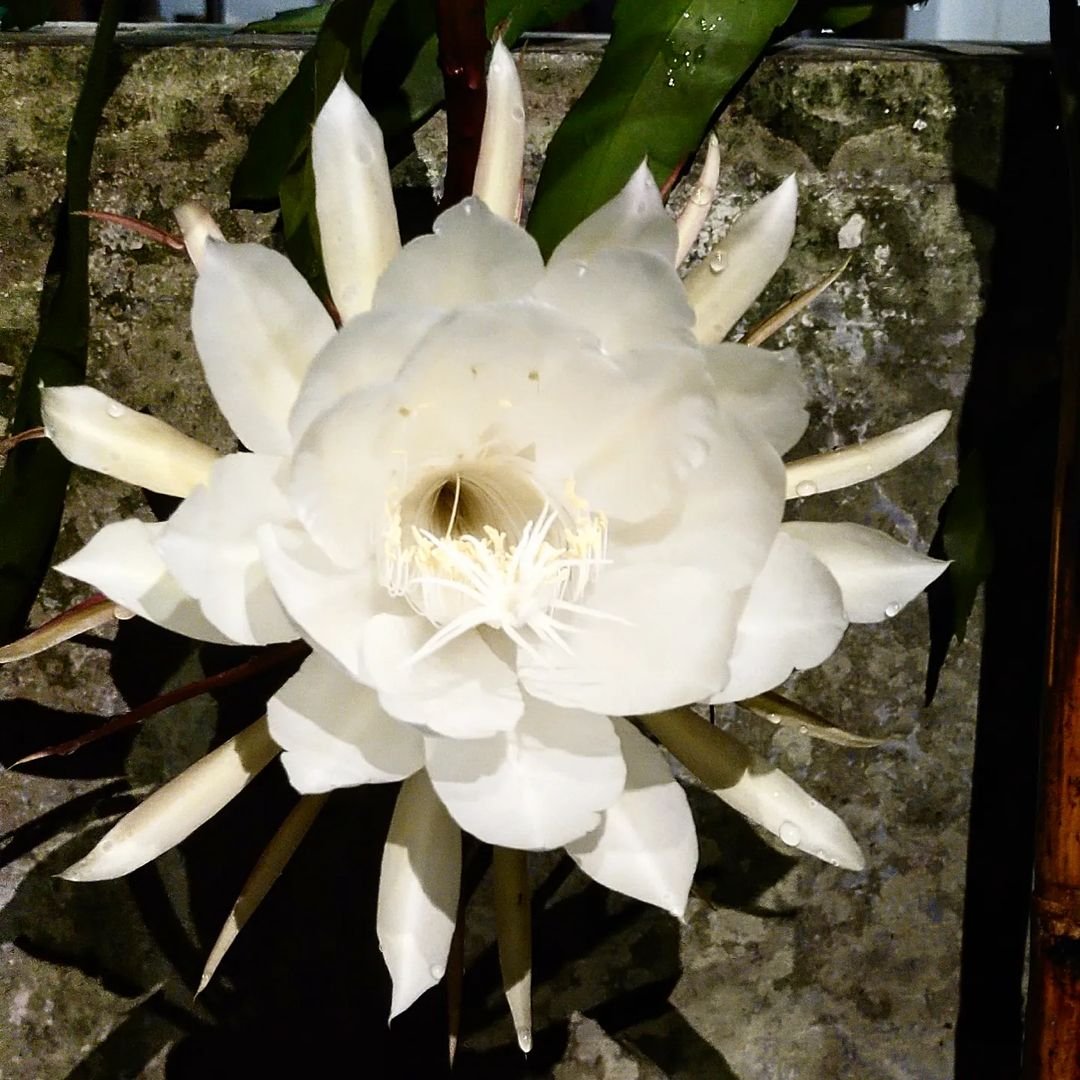
The Queen of the Night (Epiphyllum oxypetalum) is a unique flowering plant in the cactus family. It’s known botanically as an “epiphyllum,” meaning it has flat stems that resemble leaves (known as phylloclades). These flat, leafy stems make it look more like a succulent than a traditional cactus.
This tropical species grows naturally as an epiphyte on trees and rocks across Mexico, Guatemala, El Salvador, and other parts of Central America. Its stems can reach up to 10 feet in length, branching out and climbing onto other plants.
While not a true night-blooming cactus, Queen of the Night shares many similarities with desert cacti. It has fleshy, water-storing stems covered in small bristles called areoles instead of leaves. It also prefers very well-drained soil and minimal moisture, just like its desert cactus cousins.
But unlike most cacti, what makes Queen of the Night so unique are its spectacular, intensely fragrant flowers with large white petals that only open at nighttime. These fleeting, nocturnal blooms are what give this plant its regal name.
Why Grow Queen of the Night?
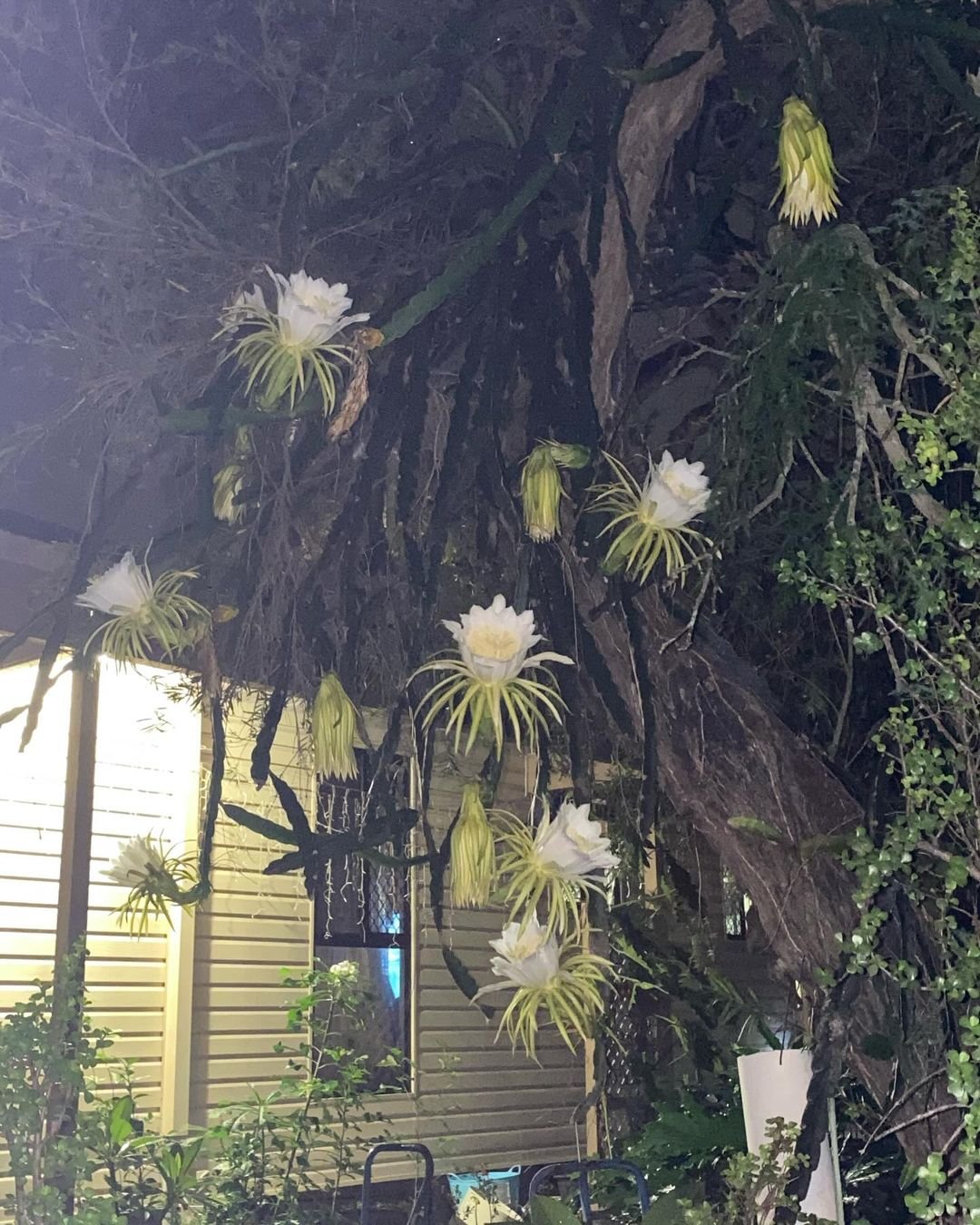
If you’re looking to add something truly exotic and eye-catching to your houseplant or garden collection, few plants can match the intrigue of Queen of the Night. Its peculiar nighttime blooms, sweet scent, and unusual growth habit make it a highly prized ornamental succulent.
Some of the biggest reasons gardeners love to grow Queen of the Night include:
- Massive, showy white flowers up to 10-12 inches across
- Evening blooms release an intense, sweet fragrance
- Unique, sculptural growth habit with leafy stems
- Relatively easy plant to care for when basic needs are met
- Versatile as a potted houseplant, hanging basket, or landscape accent
- Long-lived plant with decade-long potential bloom displays
While the flowers only last for a single night, plants can bloom multiple times throughout the growing season. With the proper climate and care, mature Epiphyllum oxypetalum plants may produce dozens of enormous, showy blossoms over several months.
If you can stay up late enough to see them in all their glory, these fleeting, night-blooming flowers are an incredible sight to behold. And the sweet fragrance perfuming the evening air is equally memorable.
Planting Queen of the Night

While Epiphyllum oxypetalum is an epiphytic plant in its native lands, it can be easily grown in pots, containers, or even planted directly in the ground in warm, frost-free climates. Just be sure to provide excellent drainage and the right soil conditions.
Potting Soil & Containers Like most cacti and succulents, the Queen of the Night prefers a very fast-draining soil mix that won’t stay soggy. A high-quality cactus/succulent potting mix is ideal, or make your own by combining:
- 2 parts potting soil
- 1 part coarse sand or perlite
- 1 part small pebbles or crushed granite
Adding extra perlite, bark bits, or stones helps improve drainage even further. Plastic, terracotta, or hanging baskets with ample drainage holes are all suitable containers.
When potting, leave 2-3 inches from the soil surface to the pot lip to allow proper watering. Place a small piece of screen over the drainage holes to prevent soil from washing out while still allowing water to pass through.
Planting Queen of the Night For potted plants, secure each stem section vertically in the potting medium so the bottom 4-6 inches are buried. Don’t plant stems horizontally, as this can cause them to rot.
When planting in the ground outdoors, amend the soil heavily with compost, sand, or other materials to improve drainage and aeration. Creating a raised planting bed may also be necessary in heavy soils.
During the plant’s active growth period, provide support via stakes, trellises, or baskets to encourage the trailing, climbing stems. This prevents the heavy flowers and stems from falling over.
General Queen of the Night Care
Whether growing Queen of the Night in pots or in the ground outdoors, this epiphytic cactus requires some very specific care. Provide the following conditions:
Light and Temperature
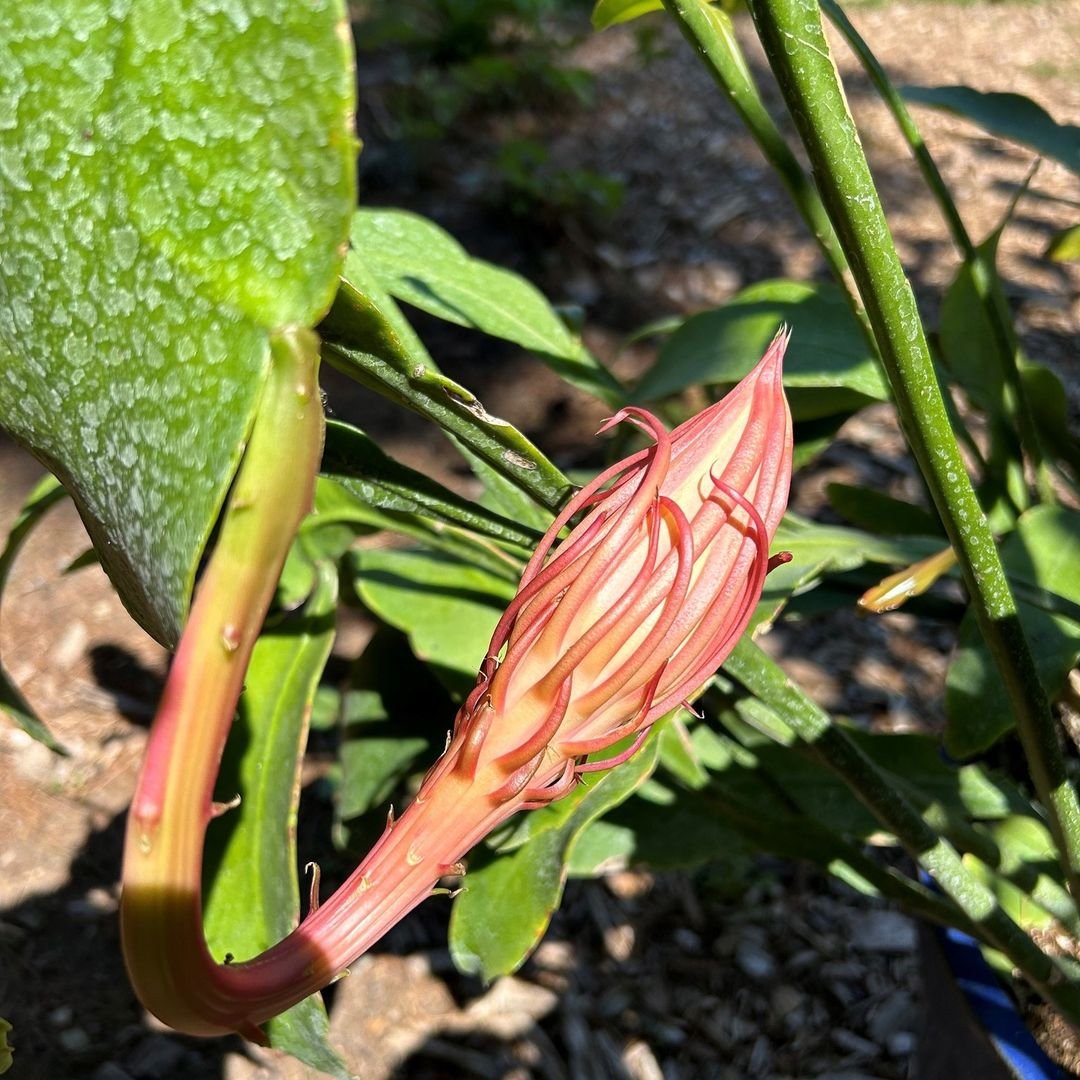
All Epiphyllum species require very bright light to bloom well, ideally at least 6-8 hours of direct sunlight per day. Outdoor plants can tolerate full sun, but indoor plants may need supplemental grow lights.
Ideal temps during active growth are between 65-90°F. Queen of the Night can tolerate extreme heat up to 100°F but may go dormant at sustained temps over 95°F. Never expose plants to freezing conditions.
Water and Humidity
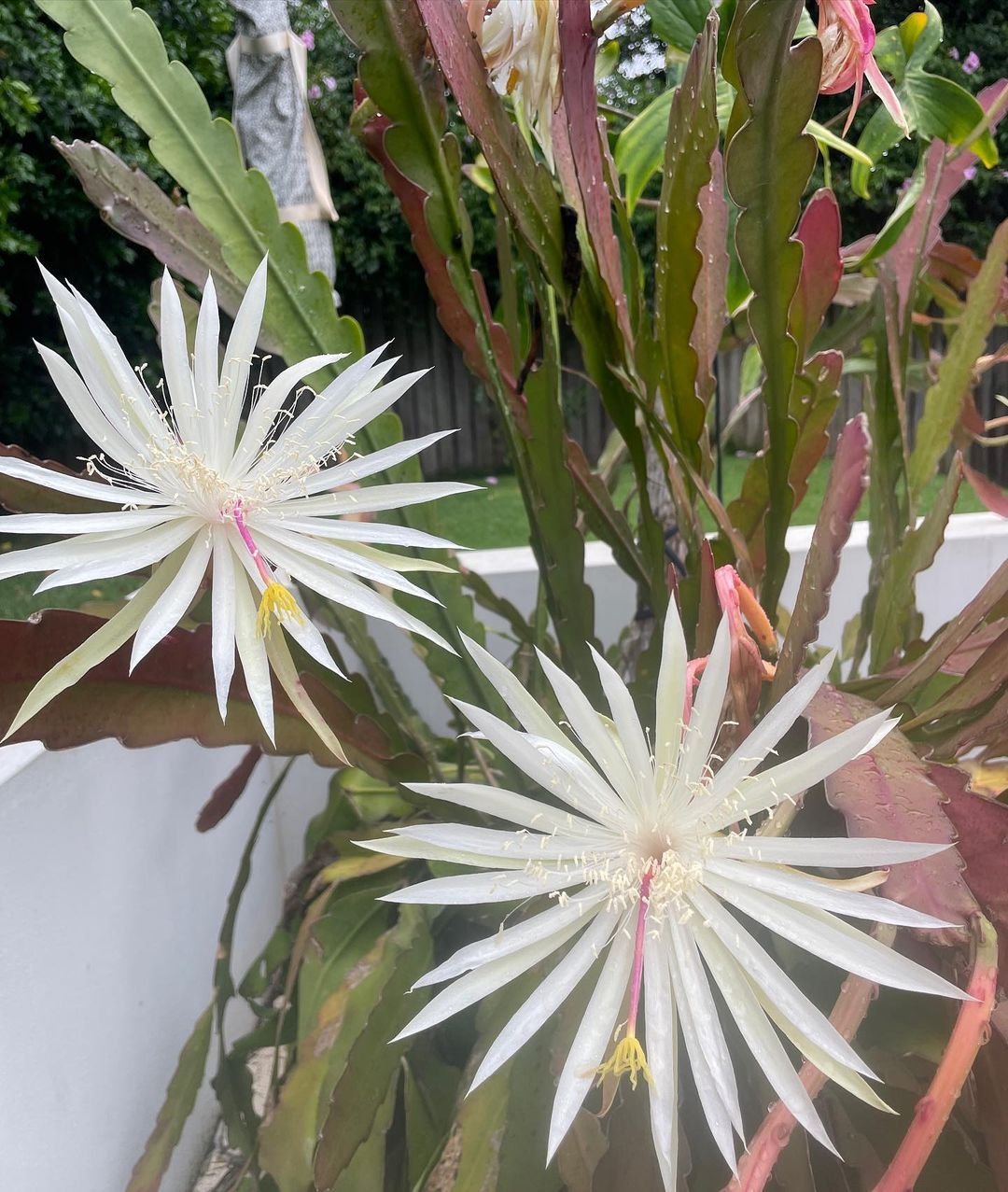
Like other cacti, Queen of the Night prefers infrequent but very deep waterings. Only water plants when the potting mix is completely dry, allowing the soil to dry out between each irrigation.
While active growth occurs, provide moderate humidity of 30-50%. Use a pebble tray or humidifier for indoor plants, or mist the stems occasionally in very dry conditions.
Fertilizer
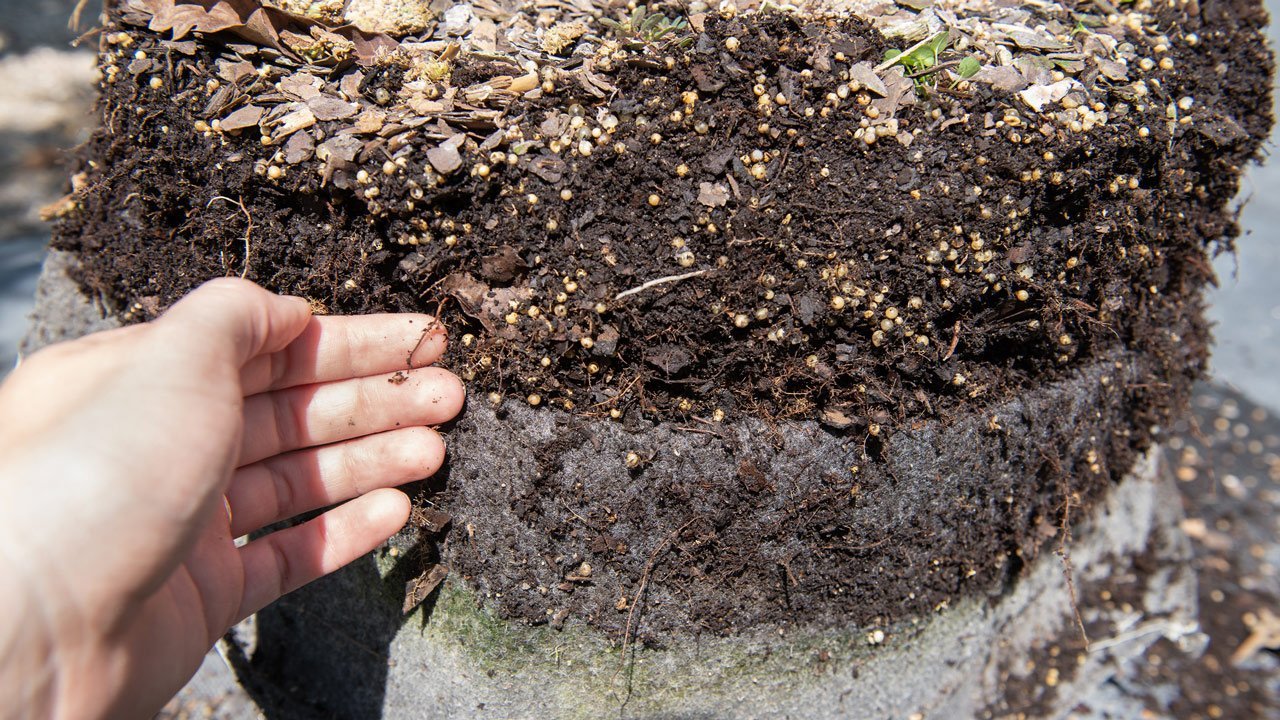
Feed Epiphyllum oxypetalum plants once a month during their growing season with a balanced liquid fertilizer diluted to half strength. Alternatively, use a slow-release cactus/succulent fertilizer worked into the potting mix.
No fertilizer is needed during the plant’s winter dormancy. Excess fertilizer can actually cause more harm than good for these low-feeders.
Pruning
Trim off any dead or damaged stems from your Queen of the Night any time of year, cutting them back to a healthy section of growth. Otherwise, little pruning is required aside from shaping plants occasionally.
Deadheading wilted flowers in the morning is not necessary, as they’ll detach from the plant on their own. But removing spent blossoms encourages reblooming.
All pruning and shaping should be done in early spring before the plant breaks dormancy. Never prune heavily during summer or fall when night-blooming occurs.
Proper Cultural Care for Reblooming
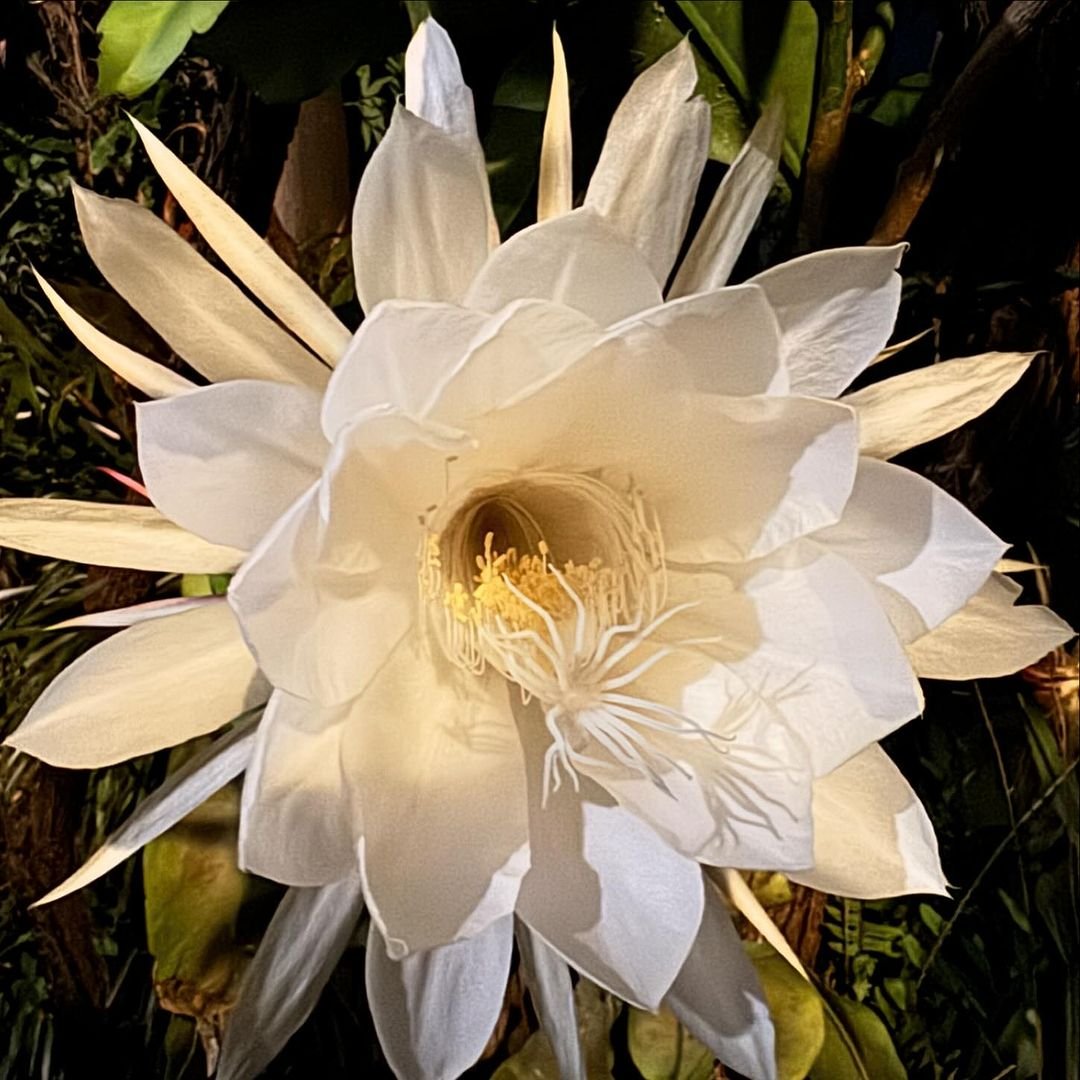
While its flowers are undeniably showy, getting the Queen of the Night to reliably rebloom takes some specific cultural care. Here are the keys to promoting maximum night-bloomings:
Cool Winter Dormancy
Like many subtropical and tropical cacti, Epiphyllum oxypetalum requires a true winter rest period to rebloom generously the following season.
From late fall through winter, provide cooler temps around 50-55°F with reduced watering. Plants may lose some leaves during their winter dormancy, but this is normal.
Without this cool, dry rest, Queen of Night flowers will be few and far between. The dormant period helps reset the plant’s bloom cycle annually.
Water Management
Proper moisture management is also key to inducing blooms. The night queen prefers deep but infrequent waterings during its active growth phase of spring through fall.
Let the potting mix dry out nearly completely between waterings during the growing season, but don’t allow it to stay bone dry for too long. Consistent underwatering can prevent flowering.
When flower buds begin appearing in late spring/early summer, increase humidity slightly by misting plants or using a pebble tray. This replicates the higher rainfall in its native environment that triggers blooming.
Balance of Light and Heat
The Queen of the Night absolutely requires bright, direct sunlight to set its enormous flowers – at least 6 hours per day, but more is better. Provide supplemental grow lights if lower indoor light levels.
Heat is another important factor. Higher temperatures between 80-95°F promote active growth and night-blooming during the prime season of late spring through summer. Cooler temps below 60°F will delay flowering.
With the proper seasonal temperature, light, water and humidity changes, a mature Epiphyllum oxypetalum can be relied on to produce its spectacular, night-blooming floral displays year after year.
Enjoying the Night Blooms
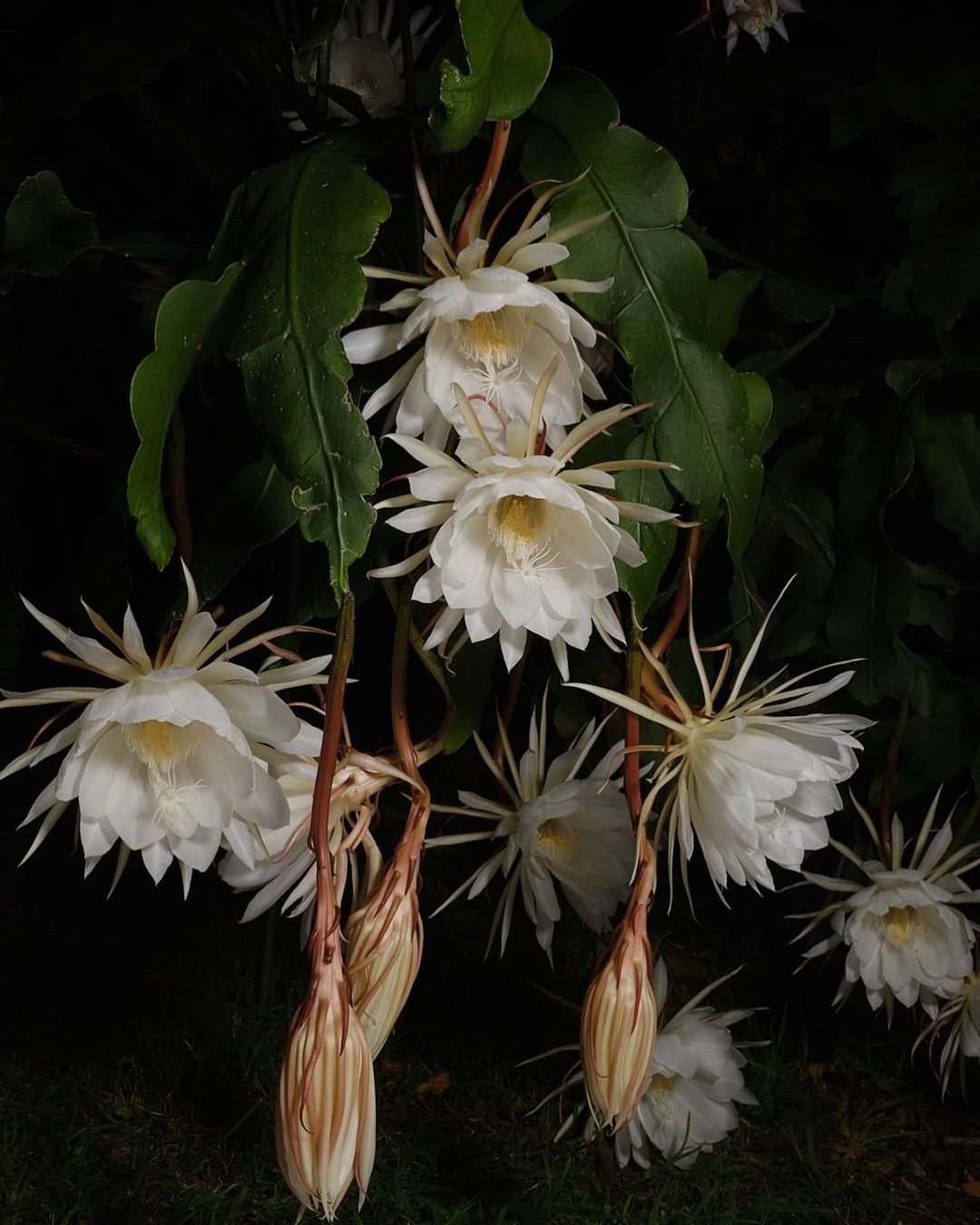
The true payoff for providing ideal Queen of the Night growing conditions is being able to witness those remarkable, sweet-scented blooms in all their glory. Each flower can reach 10-12 inches across when fully open!
Nighttime Blooming Period
There’s no set schedule for when Queen of the Night flowers will open. But in general, blooms tend to unfurl in the evening hours between 8-10pm and remain open until sunrise.
The large, creamy white petals gradually open over the first few hours, reaching peak bloom sometime around midnight. This is when the intense, sweet fragrance is strongest, wafting through the air to attract nighttime pollinators.
By morning light, the beautiful flowers begin collapsing inward and withering away just as quickly as they opened. Each blossom lasts for a single night before dropping from the plant.
Multiple Bloom Cycles
While the individual flowers are incredibly fleeting, Epiphyllum plants can produce multiple bloom cycles during their flowering season. New flowers will continue to open over a period of several weeks or months during summer and early fall.
So while you may have only one opportunity to see each exquisite night-blooming, there is an extended window to enjoy repeated flowerings if conditions are right. Just be ready to adjust your sleep schedule!
Artificial pollination
is usually required to produce seed pods, as the plant’s natural moth and bat pollinators are rarely present. Use a soft brush or cotton swab to transfer pollen between flowers by hand.
With its alluring fragrance and unique nocturnal blooming behavior, the Queen of the Night offers gardeners a true spectacle unlike any other plant. Catching a glimpse of these magnificent flowers in their full splendor is an unforgettable experience.
While not the easiest houseplant to grow for beginners, the Queen of the Night is well worth the effort for expert gardeners looking to cultivate something truly extraordinary. Provide the right soil, light, temperatures and seasonal care, and you’ll be rewarded with those regal, night-blooming beauties year after year.
Pingback: Complete Guide to Growing Queen of the Night Fl...
Pingback: How to Grow and Care for Staghorn Fern: A Complete Guide for Breathtaking Greenery -
Pingback: Monkey Tail Cactus : A Fun, Easy-Care Succulent - Gardener's School
Pingback: 19 Best Plants for a Welcoming Front Door - Gardener's School